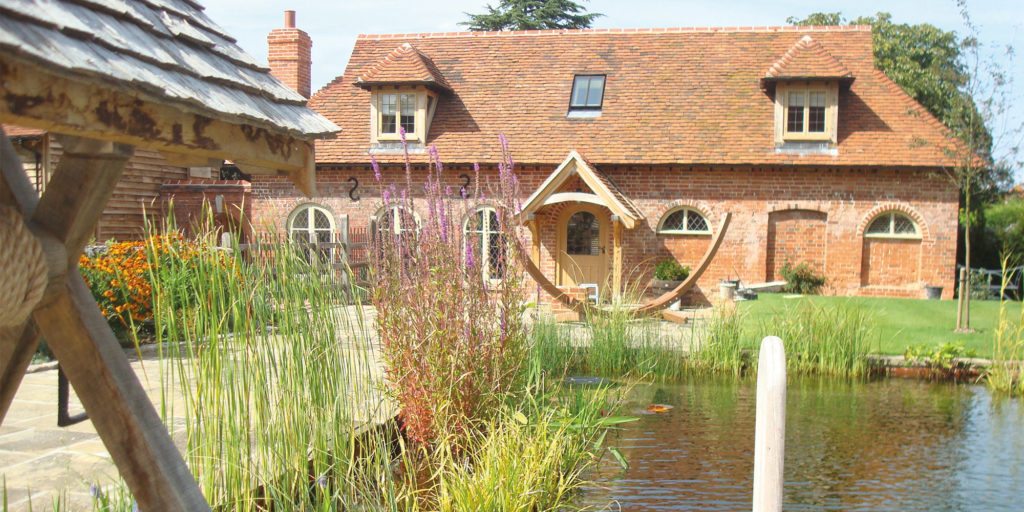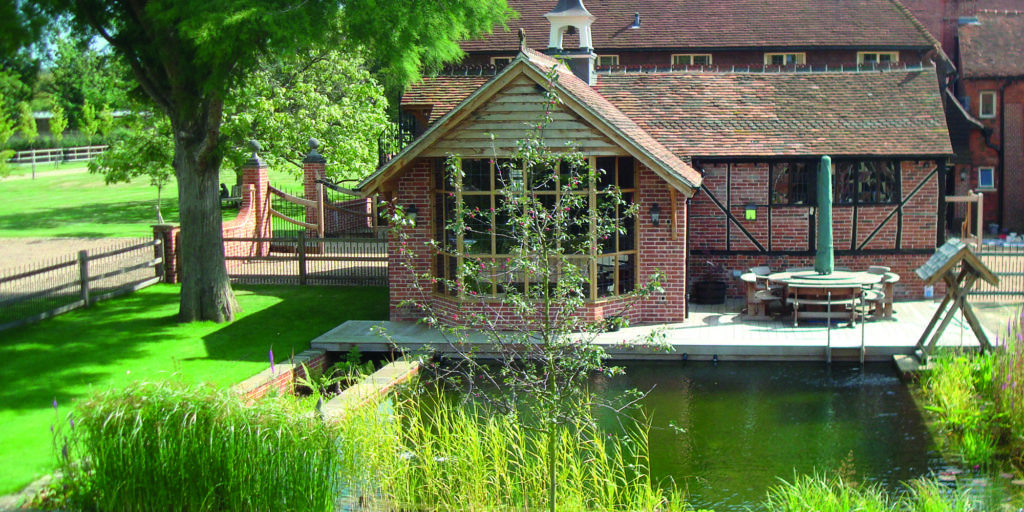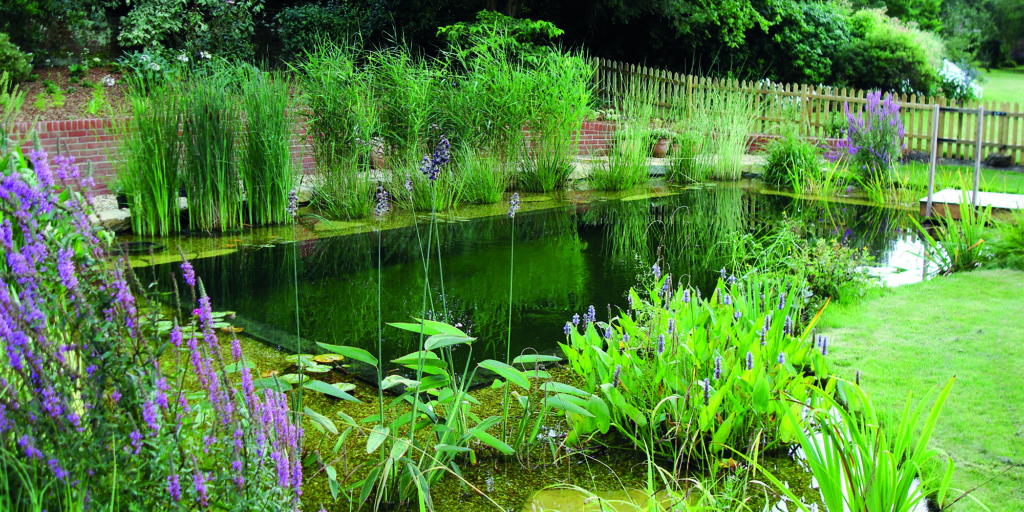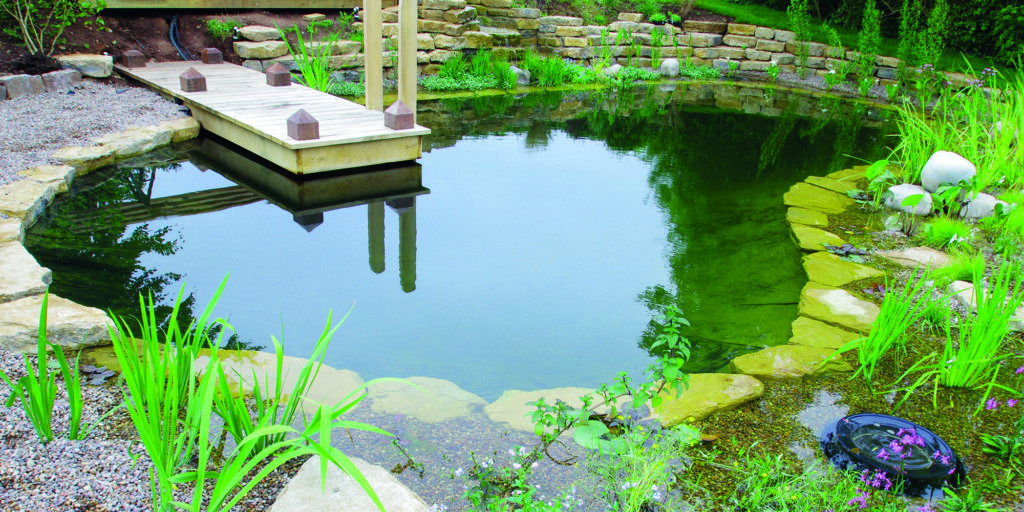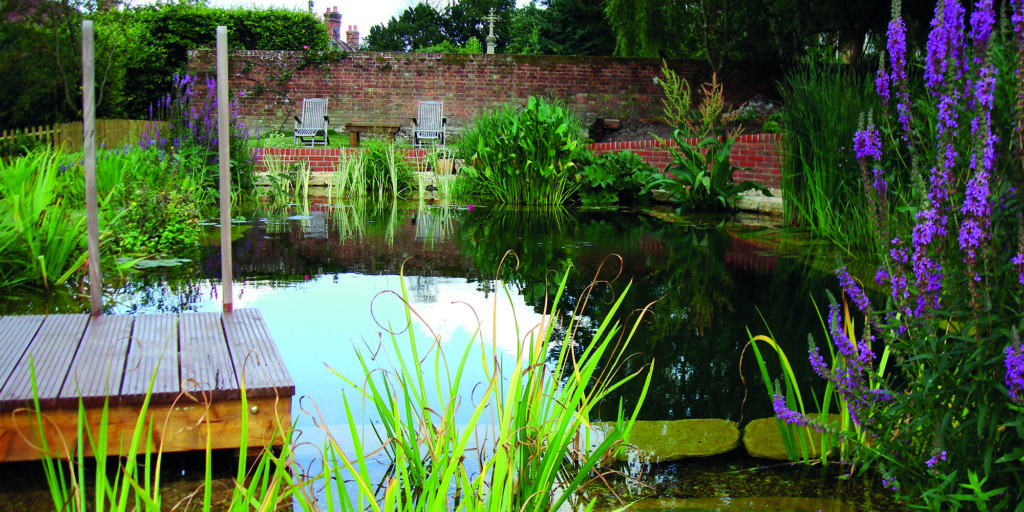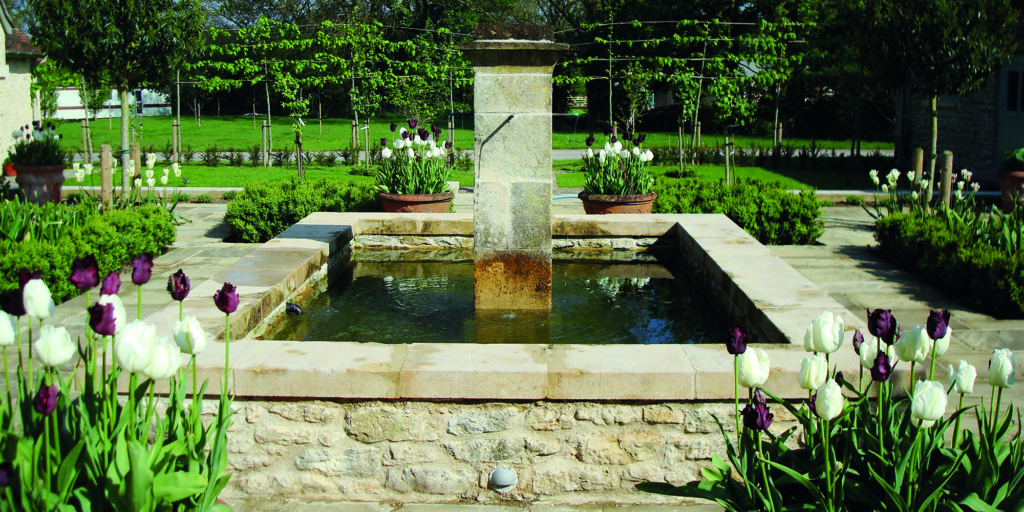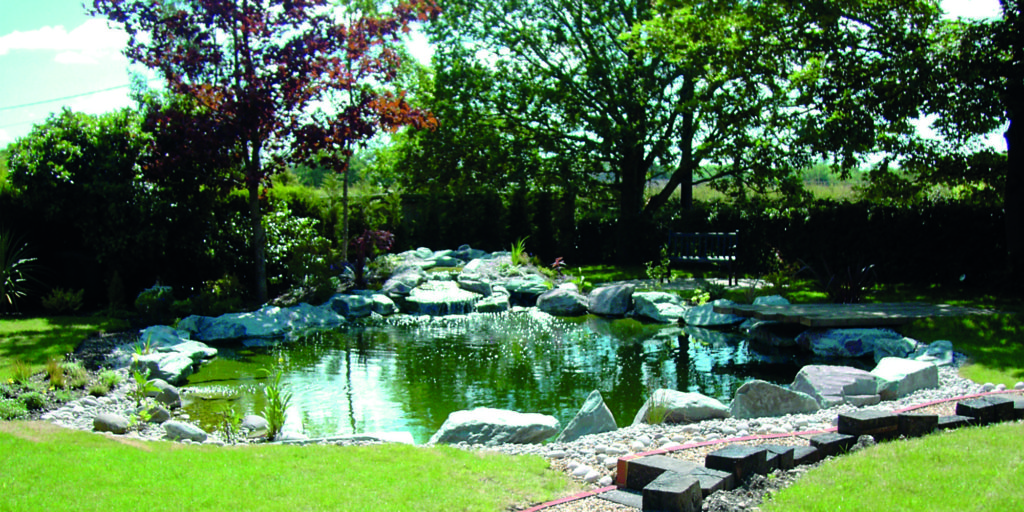

What a feature!
While an exciting one, building a pond in your garden can be a daunting task, so we seek advice from Andy at Cornwall Ponds.
It turns out, there’s quite a lot to take into account when creating a pond, as Cornwall Ponds owner, Andy, explains. “A little preparation and careful planning by following a few simple guidelines will pay dividends, allowing you to reap the benefits of having a beautiful, ecologically balanced ecosystem in your garden.”
“Is it for wildlife or an ornamental purpose? Will it be a koi pond, or even a swimming pond?
“Firstly, consider what’s above and below ground, as well as soil conditions, and remember that what you dig out can increase in volume by up to 40%, often making it expensive to remove. Avoid placing a pond in direct sunlight too, as this will cause problems with algae. You do, however, need some sunlight for the aquatic plants, especially for lilies to flower.”
“If a pond is built too close to trees or overhanging foliage, not only will this reduce the amount of sunlight the plants get, but the fallen leaves will cause water problems and detritus to build up. Tree roots will also make it difficult to dig and could damage the lining once built. Choose a site with a good sunny aspect and a nearby feature that offers some shelter but without producing too much shade. Finally, you shouldn’t build a pond at the foot of a slope, as surface run-off and ground water can cause real problems.”
On which type of pond to choose, Andy tells us to consider its purpose. “Is it for wildlife or an ornamental purpose? Will it be a koi pond, or even a swimming pond? Wildlife ponds needn’t be very deep, unless you want lilies, in which case you will need a minimum depth of 0.7 metres. Avoid Goldfish and Koi if you’re intending to have a wildlife pond, as they will eat small creatures and damage plants.”
Make it friendly for creatures such as newts and frogs by incorporating varying depths and shallow, boggy, or beached areas. Marginal areas for planting are a must, as aquatic plants play a major role in the biodiversity of any pond by removing excess nutrients that can cause problem algal blooms. Choosing the right species of aquatic plants is also important and you should seek expert advice.
Finally, it’s crucial that you maintain the the clarity of the water, and Andy informs us: “Larger volumes of water will require more expensive filtration to keep the water habitable for the fish. It’s always worth calculating costs for the filtration.”
So there you go! If you’re looking for a way in which to diversify your garden space, perhaps building a pond with help from Cornwall Ponds could be the answer!
“Is it for wildlife or an ornamental purpose? Will it be a koi pond, or even a swimming pond?

